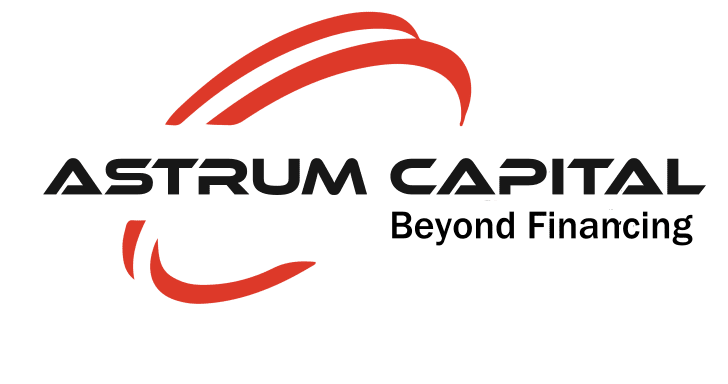In today's competitive business landscape, access to modern and efficient equipment is crucial for the success and growth of enterprises across various industries. However, the high costs associated with acquiring new equipment often pose significant challenges to businesses, especially small and medium-sized enterprises (SMEs). This is where equipment financing plays a vital role. Equipment financing …
In today’s competitive business landscape, access to modern and efficient equipment is crucial for the success and growth of enterprises across various industries. However, the high costs associated with acquiring new equipment often pose significant challenges to businesses, especially small and medium-sized enterprises (SMEs). This is where equipment financing plays a vital role. Equipment financing offers businesses the means to acquire necessary equipment without a large upfront capital investment. In this article, we will explore the importance of equipment financing and discuss its benefits and implications for businesses.
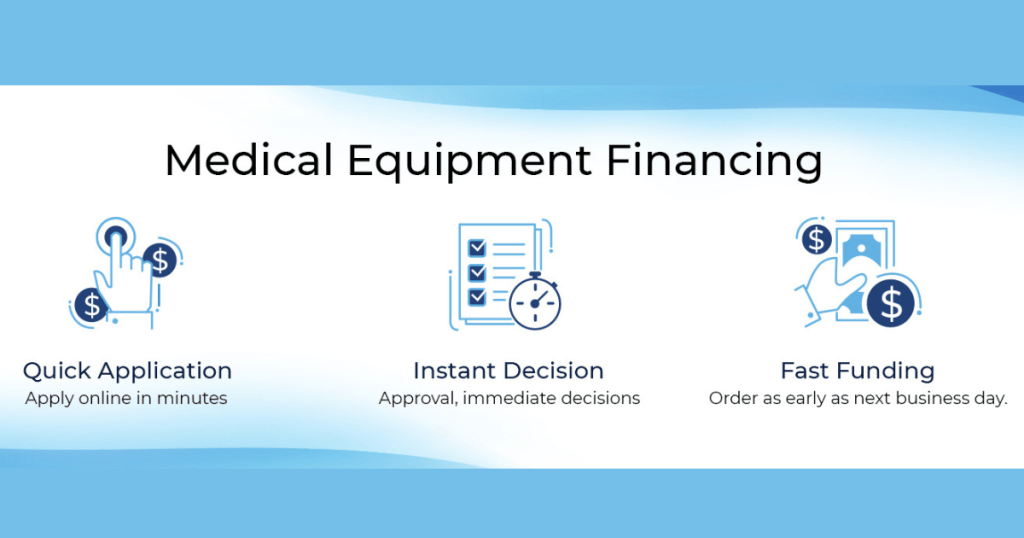
1. Understanding Equipment Financing
Equipment financing involves obtaining the necessary funds to acquire equipment required for business operations. Rather than making a large upfront payment, businesses can secure equipment through financing options such as leasing, equipment loans, or equipment rental. This allows businesses to access the equipment they need while spreading the cost over time.
A. Definition and Purpose
Equipment financing refers to the process of securing funds to acquire equipment, machinery, or technology necessary for business operations. The purpose of equipment financing is to provide businesses with a cost-effective alternative to purchasing equipment outright, enabling them to conserve their capital and allocate it to other critical areas.
B. Types of Equipment Financing
I. Lease Financing:
Lease financing involves renting equipment for a specified period, paying regular lease payments. At the end of the lease term, businesses can choose to return the equipment, renew the lease, or purchase the equipment at a predetermined price.
II. Equipment Loans:
Equipment loans are a form of financing where businesses borrow funds specifically to purchase equipment. The loan is repaid in installments over a predetermined period, typically with interest.
III. Equipment Rental:
Equipment rental allows businesses to temporarily use equipment for a fee. This option is suitable for short-term projects or when businesses need specialized equipment on a temporary basis.
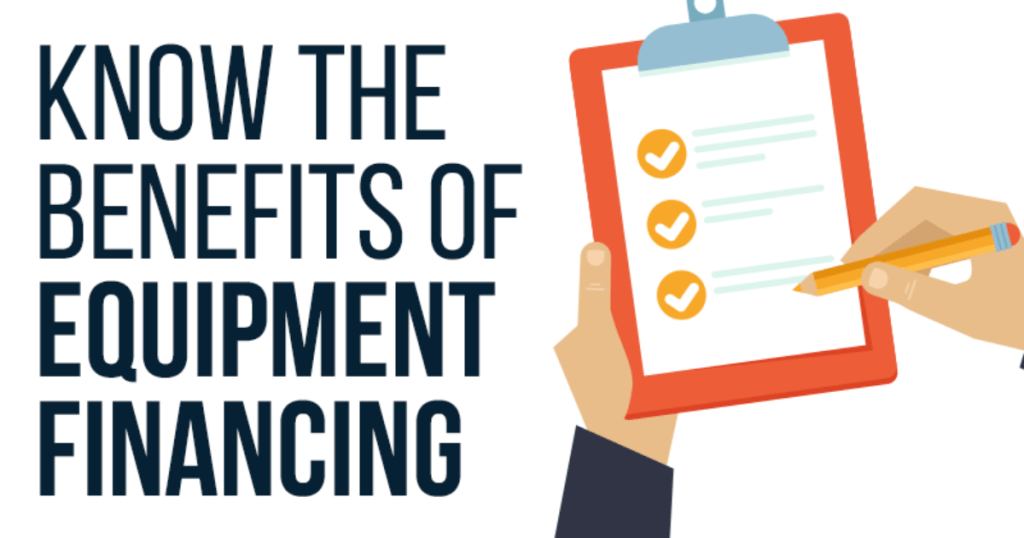
2. The Benefits of Equipment Financing
Equipment financing offers several advantages that can significantly impact a business’s growth and success. Let’s explore some of the key benefits:
A. Cash Flow Preservation:
One of the primary advantages of equipment financing is the preservation of cash flow. Instead of making a substantial upfront payment for equipment, businesses can allocate their available funds for other essential purposes such as marketing, inventory, or hiring employees.
B. Avoiding Obsolescence:
Technological advancements often lead to equipment obsolescence. By utilizing equipment financing, businesses can regularly upgrade their equipment to stay competitive without bearing the full cost of replacing outdated machinery.
C. Flexibility and Upgradability:
Equipment financing provides flexibility for businesses to upgrade their equipment as their needs evolve. Lease financing, in particular, allows for easy equipment replacements or upgrades at the end of the lease term, ensuring businesses always have access to state-of-the-art technology.
D. Tax Advantages:
In many cases, equipment financing offers tax benefits to businesses. Lease payments and interest on equipment loans are often tax-deductible, reducing the overall tax liability for businesses.
E. Improved Efficiency and Productivity:
Modern and efficient equipment can significantly enhance a business’s efficiency and productivity. By accessing equipment through financing, businesses can optimize their operations, streamline processes, and deliver higher-quality products and services.
F. Access to Latest Technology:
Equipment financing enables businesses to keep pace with technological advancements. By acquiring up-to-date equipment, businesses can leverage cutting-edge features, increase their capabilities, and stay ahead of the competition.
G. Easier Budgeting and Forecasting:
Equipment financing allows for predictable and manageable payments over an extended period. This makes budgeting and financial forecasting more accurate and reliable, providing businesses with greater stability and control over their finances.
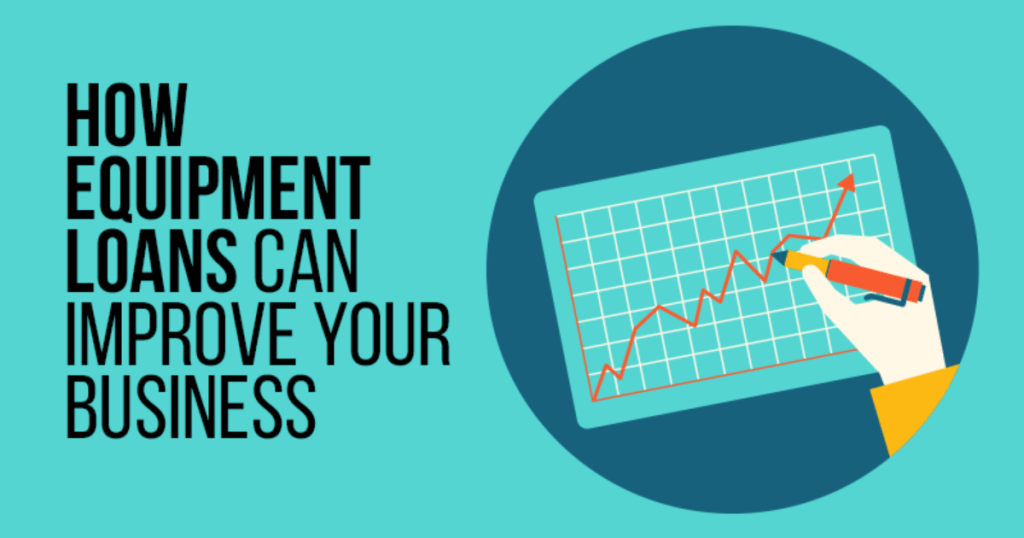
3. Equipment Financing for Small and Medium-Sized Enterprises (SMEs)
Equipment financing is particularly beneficial for small and medium-sized enterprises (SMEs), which often face unique challenges in acquiring necessary equipment. Let’s delve into the specific advantages of equipment financing for SMEs:
A. Overcoming Capital Constraints:
SMEs typically have limited capital resources, making it difficult to make significant upfront investments in equipment. Equipment financing allows SMEs to acquire the equipment they need without exhausting their capital reserves, freeing up funds for other critical business expenses.
B. Minimizing Risk:
Purchasing expensive equipment outright carries inherent risks, especially for SMEs with limited financial buffers. Equipment financing shifts the risk to the financing provider, reducing the financial burden on SMEs in case of unexpected equipment malfunctions, repairs, or obsolescence.
C. Strategic Financial Planning:
Equipment financing enables SMEs to strategically plan their finances. Instead of depleting their working capital or taking on large debt burdens, SMEs can structure equipment financing options that align with their cash flow and revenue projections, ensuring financial stability and long-term sustainability.
D. Competitive Advantage:
Access to modern and efficient equipment through financing gives SMEs a competitive edge. By utilizing state-of-the-art technology, SMEs can enhance their productivity, deliver high-quality products or services, and differentiate themselves in the market.
E. Enhancing Creditworthiness:
Equipment financing can contribute to improving an SME’s creditworthiness. By making timely payments on equipment financing agreements, SMEs can build a positive credit history, which can be beneficial for future financing needs or other business opportunities.
F. Preserving Working Capital:
Working capital is essential for day-to-day operations, such as covering operating expenses, payroll, and inventory management. Equipment financing allows SMEs to preserve their working capital by spreading the equipment acquisition costs over time, ensuring they have sufficient funds to address immediate business needs.

4. Considerations for Equipment Financing
While equipment financing offers numerous benefits, businesses should carefully evaluate their options and consider several factors before entering into a financing agreement. Here are some essential considerations:
A. Choosing the Right Financing Option:
Businesses should assess their specific needs, financial capabilities, and long-term goals to select the most suitable financing option. Lease financing, equipment loans, and equipment rental each have unique features and implications, so understanding the differences is crucial.
B. Evaluating Total Cost of Ownership:
When evaluating equipment financing options, it’s essential to consider the total cost of ownership. This includes not only the initial equipment price or lease payments but also factors like maintenance, repairs, insurance, and potential upgrades. Comparing the total cost of ownership helps businesses make informed decisions and identify the most cost-effective option.
C. Understanding Terms and Conditions:
Before entering into an equipment financing agreement, businesses should carefully review and understand the terms and conditions. Key aspects to consider include interest rates, repayment schedules, penalties for early termination, and end-of-lease options. Clear comprehension of these terms ensures businesses are aware of their rights and obligations.
D. Assessing Repayment Options:
Different financing options come with varying repayment structures. Monthly installments, seasonal payments, or customized repayment plans may be available. Businesses should assess their cash flow patterns and choose a repayment option that aligns with their financial capabilities and revenue cycles.
E. Examining the Lender’s Reputation and Expertise:
Examining the Lender’s Reputation and Expertise: Selecting a reputable and experienced lender is crucial for a smooth financing experience. Businesses should research potential lenders, review their track record, and consider their expertise in equipment financing. Working with a trusted lender ensures transparency, reliable support, and access to competitive financing terms.
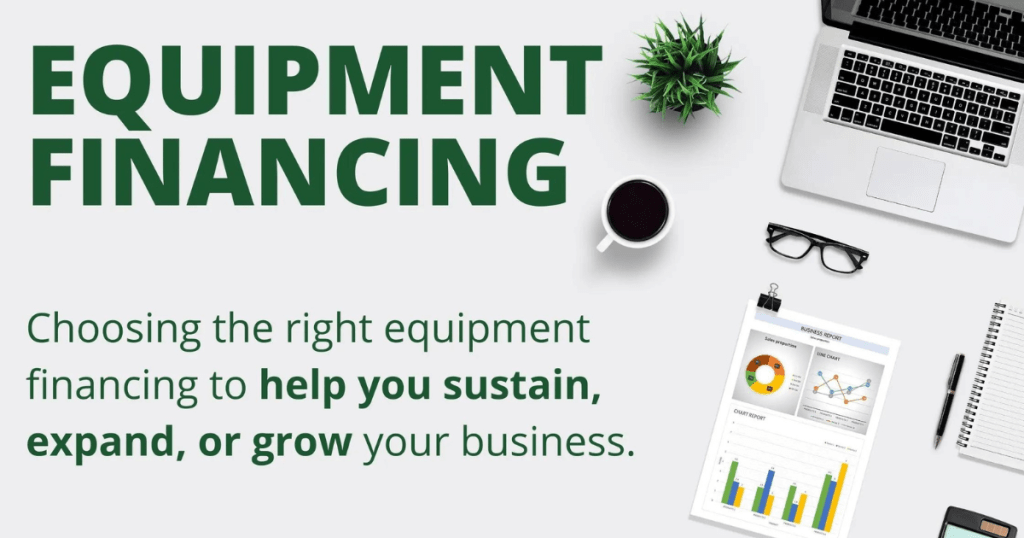
5. The Future of Equipment Financing
Equipment financing continues to evolve in response to technological advancements and changing business needs. Here are some trends and developments that may shape the future of equipment financing:
A. Technological Advancements and Industry-Specific Financing:
As technology continues to advance, equipment financing is likely to become more tailored to specific industries and technologies. Industry-specific financing solutions may emerge to address the unique equipment requirements of sectors such as healthcare, manufacturing, construction, and renewable energy. Lenders may specialize in offering financing options for advanced technologies like artificial intelligence, robotics, and automation.
B. Integration with Other Financial Solutions:
Equipment financing may become integrated with other financial solutions, such as working capital loans or asset-based lending. This integration can provide businesses with comprehensive funding packages that address both equipment acquisition and operational needs, streamlining the financing process and offering more holistic financial support.
C. Sustainability and Green Financing:
As businesses increasingly focus on sustainability and environmental responsibility, equipment financing may adapt to incorporate green financing options. Lenders may offer incentives or preferential terms for businesses investing in eco-friendly equipment or technologies that reduce carbon footprints. Green financing initiatives can support businesses in transitioning to more sustainable practices while aligning with their financial goals.
D. Digital Transformation and Streamlined Processes:
The digitization of financial processes is likely to impact equipment financing as well. Online platforms, digital applications, and automated approval processes may streamline and expedite equipment financing applications, making the process more efficient and accessible for businesses. Technology-driven solutions can enhance transparency, reduce paperwork, and facilitate faster decision-making.
Conclusion
Equipment financing plays a pivotal role in enabling businesses to acquire the necessary equipment without substantial upfront costs. The benefits of equipment financing, such as preserving cash flow, accessing the latest technology, and empowering SMEs, make it a valuable tool for driving growth and competitiveness. However, businesses should carefully consider their equipment financing needs, evaluate the total cost of ownership, and select the right financing option based on their specific circumstances. As the business landscape evolves, equipment financing is likely to adapt to industry-specific needs, integrate with other financial solutions, prioritize sustainability, and leverage digital advancements. By embracing equipment financing as a strategic financial tool, businesses can unlock growth opportunities, enhance operational efficiency, and stay ahead in an ever-changing market.
